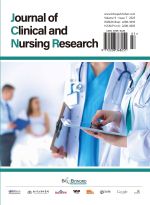Abstract
Objective: Based on the breathing exercise derived from the self-efficacy theory, this study aims to construct a breathing exercise intervention program according to the conditions of patients with chronic heart failure, to improve their cardiac function, relieve dyspnea, enhance their quality of life, and further enrich the research on the efficacy of respiratory rehabilitation exercises for patients with chronic heart failure. Method: A total of 98 inpatients with chronic heart failure admitted to the hospital from April 2024 to April 2025 were selected and randomly divided into an intervention group and a control group, with 49 patients in each group. The patients in the control group received conventional nursing, while the patients in the intervention group received the breathing exercise intervention program based on the self-efficacy theory in addition to the conventional nursing of the control group, with interventions conducted through guidance, psychological support, health education, and other methods. The conditions of patients in both groups before and after the intervention were observed. Results: After 1 month and 3 months of intervention, in terms of improving the degree of dyspnea in patients of both groups, the main effect of intervention and the time effect on the degree of dyspnea were statistically significant (F = 13.948, P < 0.001; F = 38.423, P < 0.001). Moreover, there was an interaction between the time factor and the intervention factor in both groups (F = 113.763, P < 0.001). In terms of increasing the 6-minute walking distance, the main effect and time effect in both groups were statistically significant (F = 7.371, P = 0.008; F = 459.405, P < 0.001), and there was an interaction effect between the time factor and intervention factor in both groups (F = 177.180, P < 0.001). After 1 month and 3 months of intervention, in terms of improving the level of exercise self-efficacy, the main effect of intervention and the time effect in both groups were statistically significant (F = 6.860, P = 0.01; F = 25.133, P < 0.001), and there was an interaction between the time factor and the intervention factor (F = 159.576, P < 0.05). Conclusion: Breathing exercise based on the self-efficacy theory is helpful to improve the sense of efficacy of patients with chronic heart failure, enable them to persist in breathing exercise for a long time, further alleviate their dyspnea, promote the recovery of cardiopulmonary function, and enhance their quality of life. Breathing exercise based on the self-efficacy theory can be used as a simple, home-based intervention method to provide corresponding help for patients with chronic heart failure during the rehabilitation period.
References
Wang Y, Lu J, 2024, Influence of Phased Rehabilitation Model Based on the Theory of “Lung Governing Regulation” on Compliance and Cardiac Function in Patients With Chronic Heart Failure. Henan Medical Research, 33(24): 4565–4569.
Liang L, Li X, 2024, Correlation Analysis of Self-Perceived Burden With Self-Efficacy and Coping Styles in Patients With Chronic Heart Failure. Chinese Journal of Social Medicine, 41(6): 697–701.
Li ZJ, Wang J, Lyu N, 2024, Application of Conceptual Reconstruction Cognitive Nursing Combined With Roy Adaptation Model in Elderly Patients With Chronic Heart Failure. Chinese Health Care, 42(24): 136–139.
Luo X, Wang ZY, 2024, Analysis of the Effect of Yixin Exercise Combined With Green Model Nursing on Cardiac Function in Patients With Chronic Heart Failure. Journal of Cardiovascular Disease Prevention and Treatment, 14(23): 94–97.
Li YC, Huang JJ, Lu L, et al., 2024, Application Effect of Seamless Health Education in Patients With Chronic Heart Failure. Chinese Community Doctors, 40(34): 145–147.
Wang JH, Yang YY, Wang LQ, 2024, Application Effect of Bundled Nursing Based on Self-Efficacy Theory in Patients With Chronic Heart Failure. Medical Journal of Chinese People’s Health, 36(14): 156–159.
Huang JJ, 2024, Application of Health Belief-Based Care Strategies Combined With Group Self-Affirmation Training in Elderly Patients With Chronic Heart Failure. Guide of China Medicine, 22(31): 177–179.
Jiang Q, Zhao P, 2024, Influence of Intensive Nursing on Patients With Coronary Heart Disease Complicated With Chronic Heart Failure. Journal of Shandong Medical College, 46(5): 86–88.
Zhou YY, 2024, Construction and Application of Self-Reliance Support Care Model for Elderly Patients With Chronic Heart Failure Based on Characteristics of Traditional Chinese Medicine, thesis, Zhejiang Chinese Medical University, 2024.
Wang F, Ding W, Liu J, et al., 2024, Analysis of Self-Management Trajectory and Its Influencing Factors in Elderly Patients With Chronic Heart Failure. Chinese Nursing Management, 24(9): 1308–1313.
E LL, Liao P, Wang D, et al., 2024, Current Status and Influencing Factors of Weight Management Ability in Elderly Patients With Chronic Heart Failure. Hainan Medical Journal, 35(16): 2371–2375.
Xu J, Zhang H, Zhong L, et al., 2024, Current Status and Influencing Factors of Sedentary Behavior in Patients With Stable Chronic Heart Failure. Chinese Journal of General Practice, 22(8): 1305–1309.
Zhang LH, 2024, Effect of Cardiac Rehabilitation Nursing Plus Self-Efficacy Nursing on Quality of Life in Patients With Chronic Heart Failure. Famous Doctors, 2024(13): 153–155.
Gu C, 2024, Influence of Specialist Nurse-Led Self-Management Education Program on Quality of Life in Patients With Chronic Heart Failure. Modern Health Preservation, 24(12): 922–923.
Cheng F, Ma SL, Zhao JJ, et al., 2024, Research Progress on Family Resilience in Patients With Chronic Heart Failure. Chinese Clinical Nursing, 16(6): 383–387.
